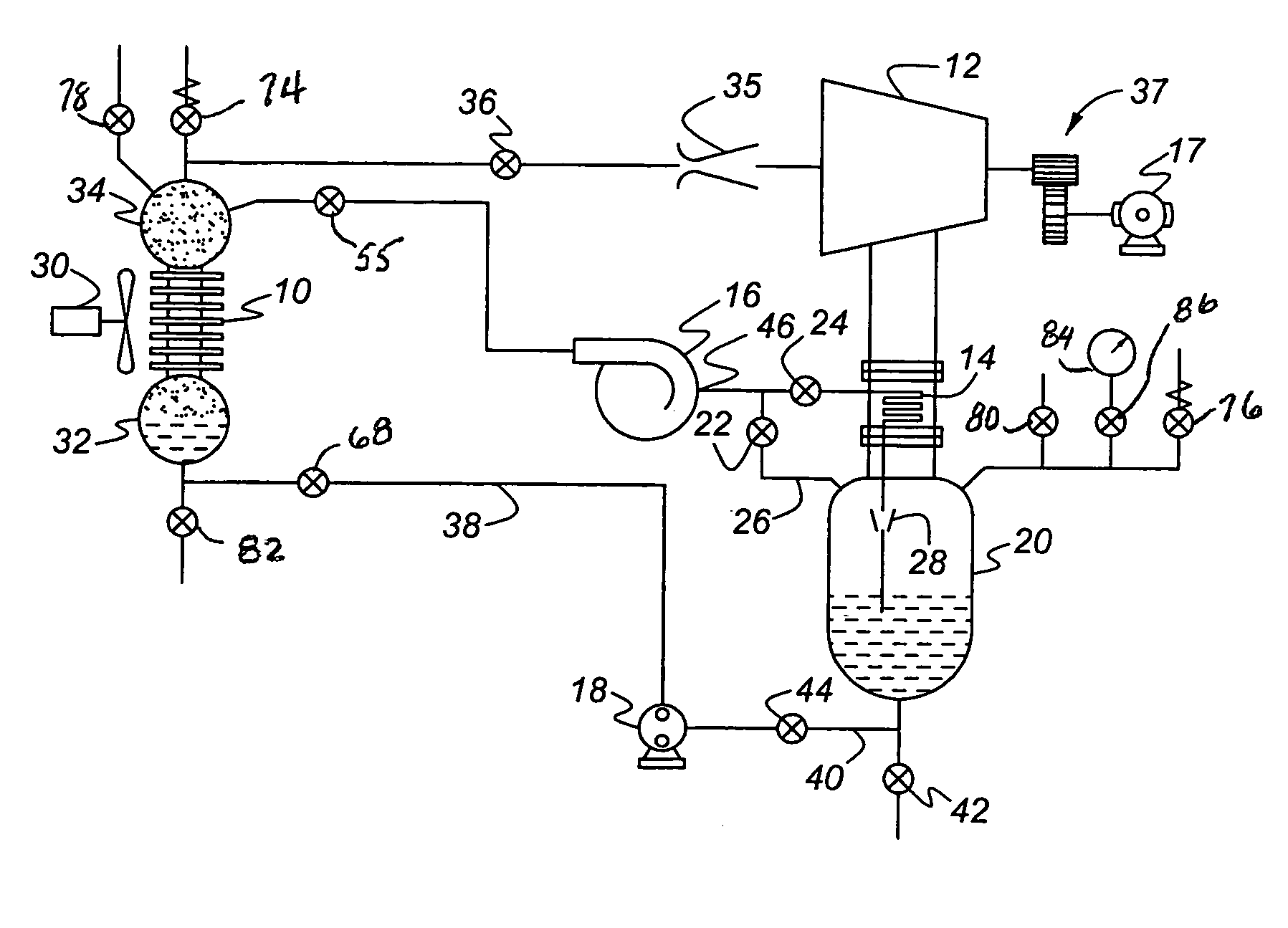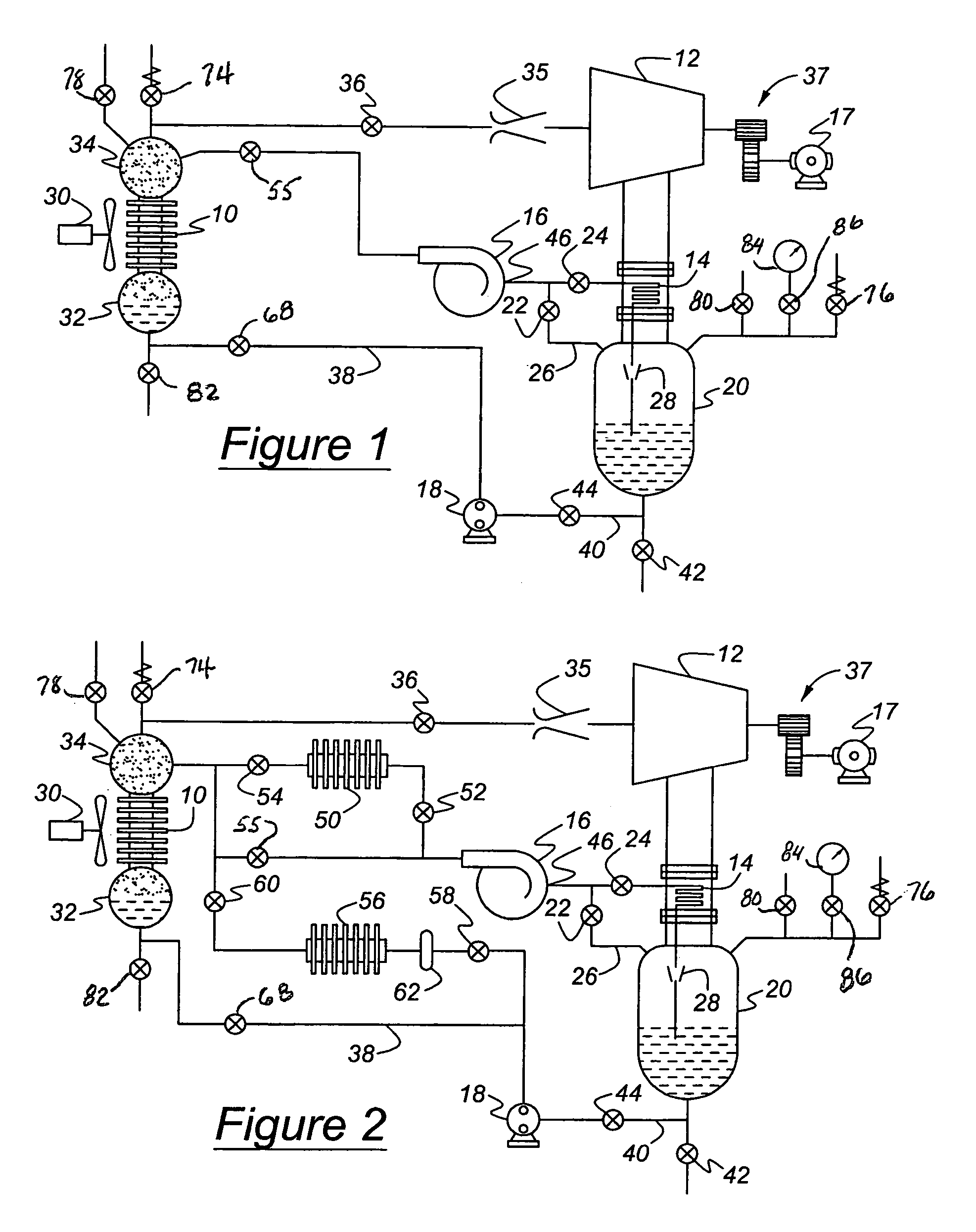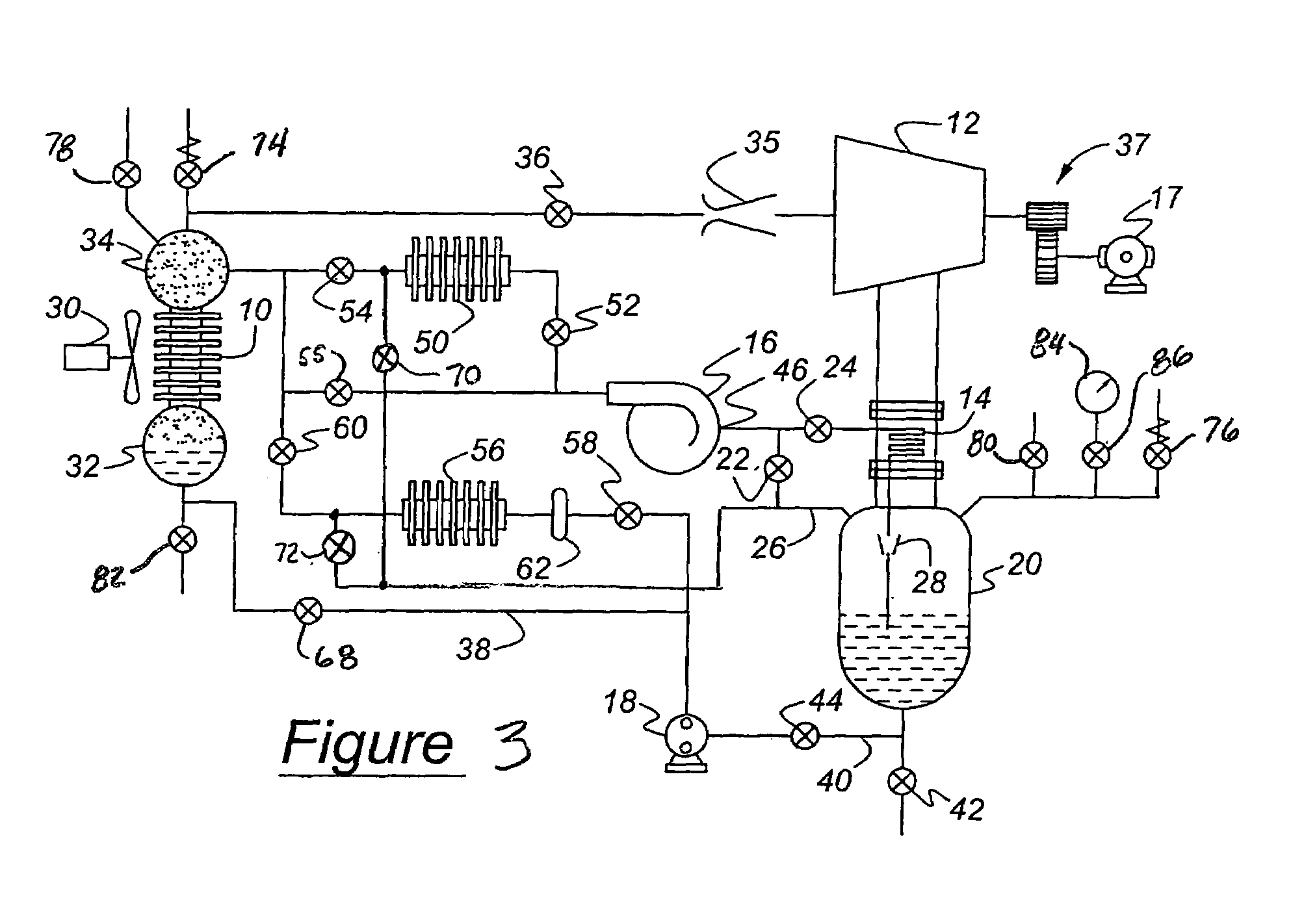Low temperature heat engine
a heat engine and low temperature technology, applied in combination engines, machines/engines, combination engines, etc., can solve the problem that the efficient method of removing latent heat from the expansion of vapor is less efficient, and achieve the effect of less efficient method of removing latent hea
- Summary
- Abstract
- Description
- Claims
- Application Information
AI Technical Summary
Benefits of technology
Problems solved by technology
Method used
Image
Examples
Embodiment Construction
[0015]FIG. 1 illustrates a system that includes a heat exchanger 10, which functions as a boiler; a prime mover 12 such as turbine 12, which is the primary extractor of heat in the form of work; and a heat exchanger 14, which function as a cooler; and an accumulator 20, a storage vessel containing discharge fluid that has passed through the prime mover. Compressor 16 draws suction from the condensate in accumulator 20 through line 26 and valve 22 to the inlet side of the compressor. Liquid condensate, drawn by compressor 16 from accumulator 20 through an expansion device 28, expands through the expansion device 28 into a low pressure volume of heat exchanger 14, the cold side. The condensate or discharge fluid flash boils at the heat exchanger 14 and extracts latent heat from the discharge fluid leaving turbine 12. The expanded vapor is then scavenged by compressor 16, which maintains low pressure in accumulator 20, is compressed to a higher pressure, and is injected into a steam dr...
PUM
 Login to View More
Login to View More Abstract
Description
Claims
Application Information
 Login to View More
Login to View More - R&D
- Intellectual Property
- Life Sciences
- Materials
- Tech Scout
- Unparalleled Data Quality
- Higher Quality Content
- 60% Fewer Hallucinations
Browse by: Latest US Patents, China's latest patents, Technical Efficacy Thesaurus, Application Domain, Technology Topic, Popular Technical Reports.
© 2025 PatSnap. All rights reserved.Legal|Privacy policy|Modern Slavery Act Transparency Statement|Sitemap|About US| Contact US: help@patsnap.com



